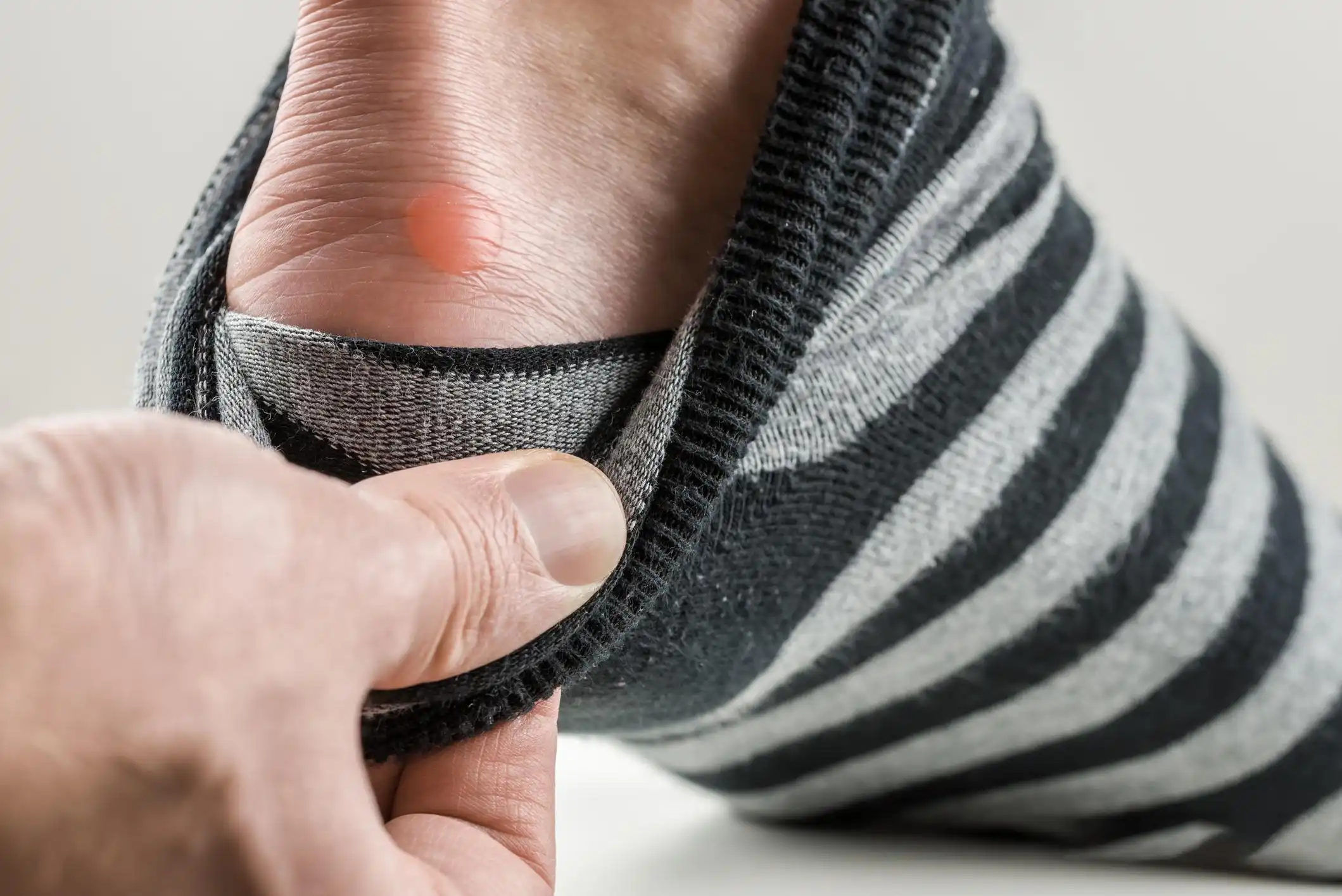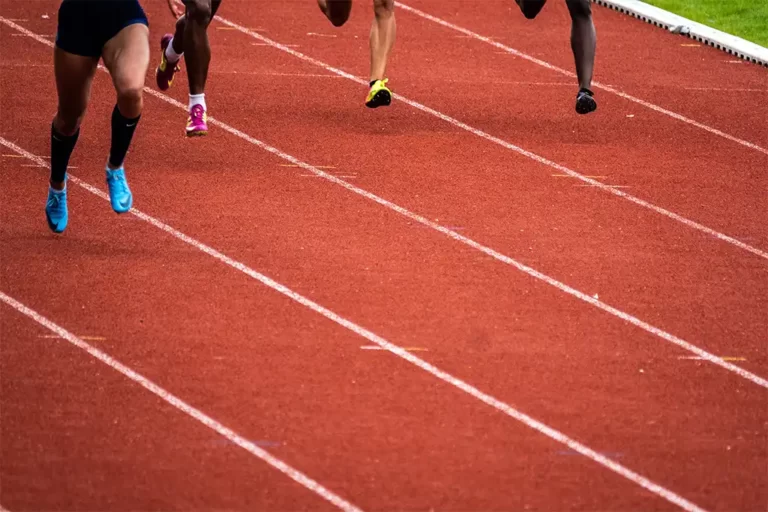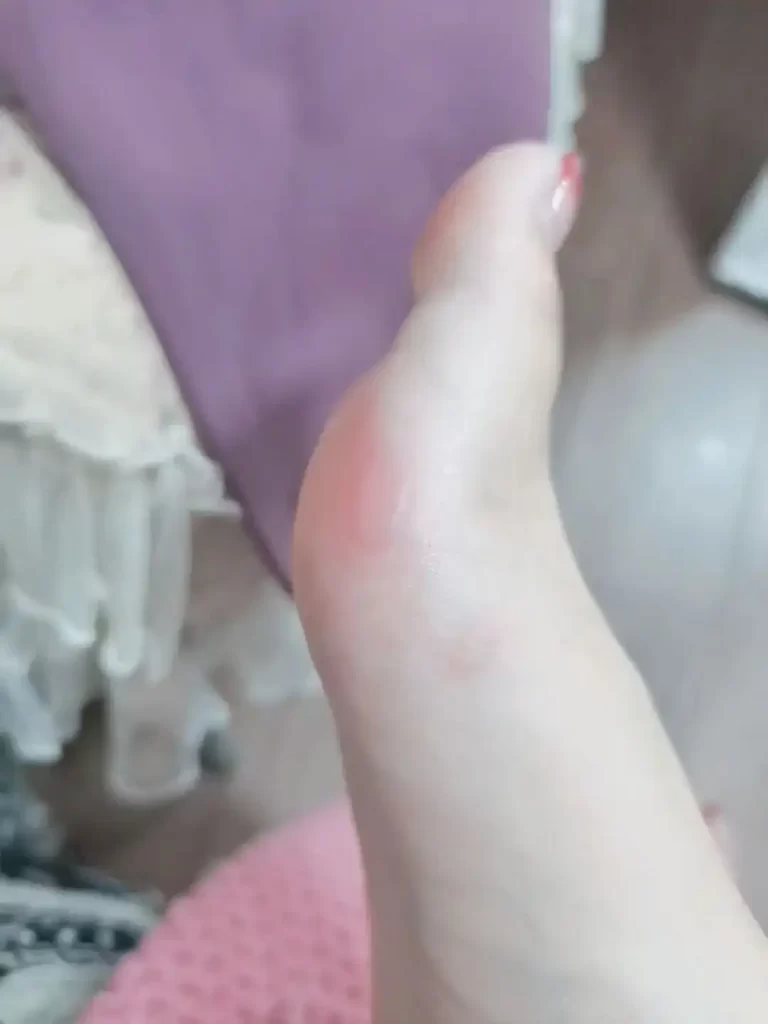What Are Foot Blisters? Understanding Causes, Symptoms, and Treatment Options
Foot blisters are small pockets of fluid that form beneath the skin, usually as a response to friction or pressure. These blisters can develop on the feet due to poorly fitting shoes, intense physical activity, or repetitive motion. They often cause pain and discomfort but are usually not serious injuries. Understanding the causes and treatments for foot blisters can help anyone manage their foot health effectively.
Many people encounter blisters, especially during activities like hiking or running, where the feet endure increased stress. They can be filled with clear fluid, blood, or even pus if infected. Recognizing the signs and knowing how to care for foot blisters is essential for preventing further issues. With effective prevention tips and treatments, individuals can stay active without the interruption of painful blisters.
Understanding Foot Blisters
Foot blisters are small pockets of fluid that form beneath the skin, usually due to friction or pressure. They can cause discomfort and pain, making it important to know their types and how they form.
Definition and Explanation
A foot blister is a small, fluid-filled sac that develops under the outer layer of skin. They often occur on the feet due to repetitive friction, moisture, or injury. Blisters can vary in size and are typically filled with clear fluid, though they can also contain blood or pus if infected. These formations act as a natural barrier, protecting the underlying skin as it heals. It is crucial to avoid popping blisters, as this can lead to infection and longer recovery times.
Various Types of Blisters
Foot blisters can be classified into several types, based on their causes and characteristics:
- Friction Blisters: Caused by repetitive rubbing against the skin, often from ill-fitting shoes.
- Burn Blisters: Formed from thermal burns or sunburns, these blisters can be painful and require special care.
- Blood Blisters: Result from trauma, they filled with blood instead of clear fluid.
- Infectious Blisters: Caused by infections, like chickenpox or herpes, usually located in specific areas.
Understanding the type of blister can help in choosing the right treatment and prevention methods.
Mechanism of Blister Formation
Blisters form as a protective response to skin damage. When the skin experiences friction or pressure, the layers can separate. This separation allows the body to produce a fluid that fills the gap. This fluid provides cushioning and promotes healing.
Factors that contribute to blister formation include:
- Friction: Intense movements like running or walking create friction points.
- Moisture: Sweat can soften the skin, making it easier to rub and form blisters.
- Temperature: Extreme heat can cause burns, leading to blister formation.
Proper footwear and moisture-wicking socks can help prevent blisters by reducing friction and keeping feet dry.
Common Causes of Foot Blisters
Foot blisters can occur for various reasons. Understanding these causes can help in prevention and treatment. Common triggers include friction, heat, moisture, chemical exposure, and certain medical conditions.
Friction-Related Blisters
Friction is one of the main causes of foot blisters. This happens when skin rubs against shoes or socks repeatedly. Activities like walking, running, or hiking can create enough friction to form a blister.
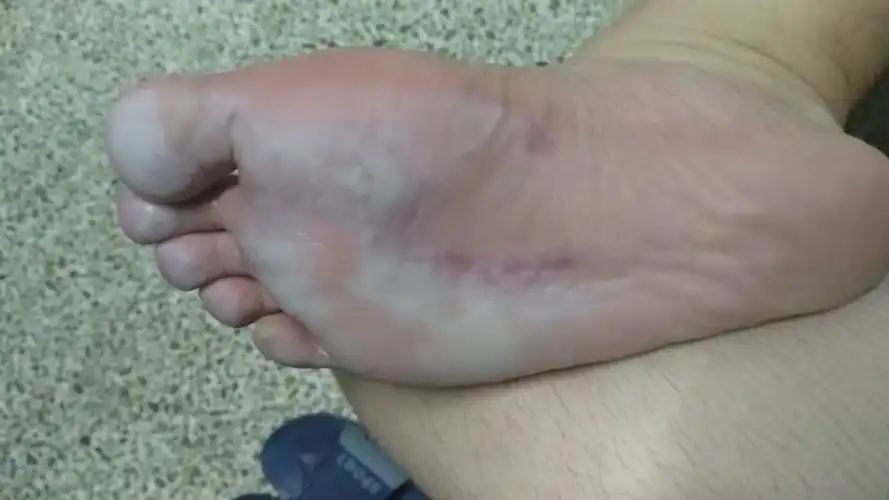
Key points:
- New or poorly fitted shoes can increase friction.
- Thin skin on specific areas, like the heels and toes, is more prone to blisters.
Proper footwear and using protective padding can minimize this risk. It’s essential to break in new shoes gradually to allow the feet to adjust.
Heat and Moisture
Heat and moisture play a significant role in blister formation. Excessive sweating can create a humid environment inside shoes. This warmth, combined with friction, leads to blisters.
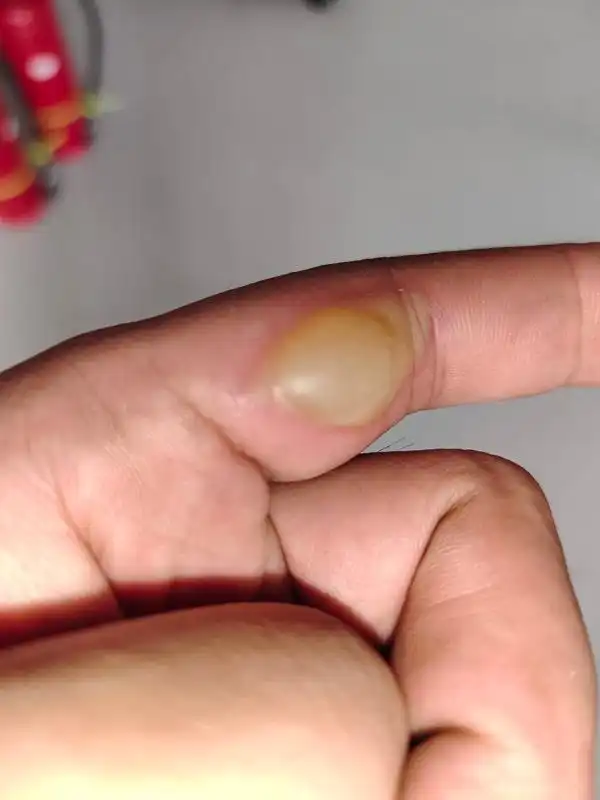
Important details:
- Moisture-wicking socks can keep feet drier.
- Keeping feet cool and dry helps prevent blister formation.
In hot weather or during intense exercise, changing socks frequently can also reduce moisture buildup.
Chemical Exposure
Chemical exposure can lead to blisters as well. Certain substances in cleaning products, adhesives, or even some soaps may irritate the skin. Contact with these irritants can cause inflammation and blistering.
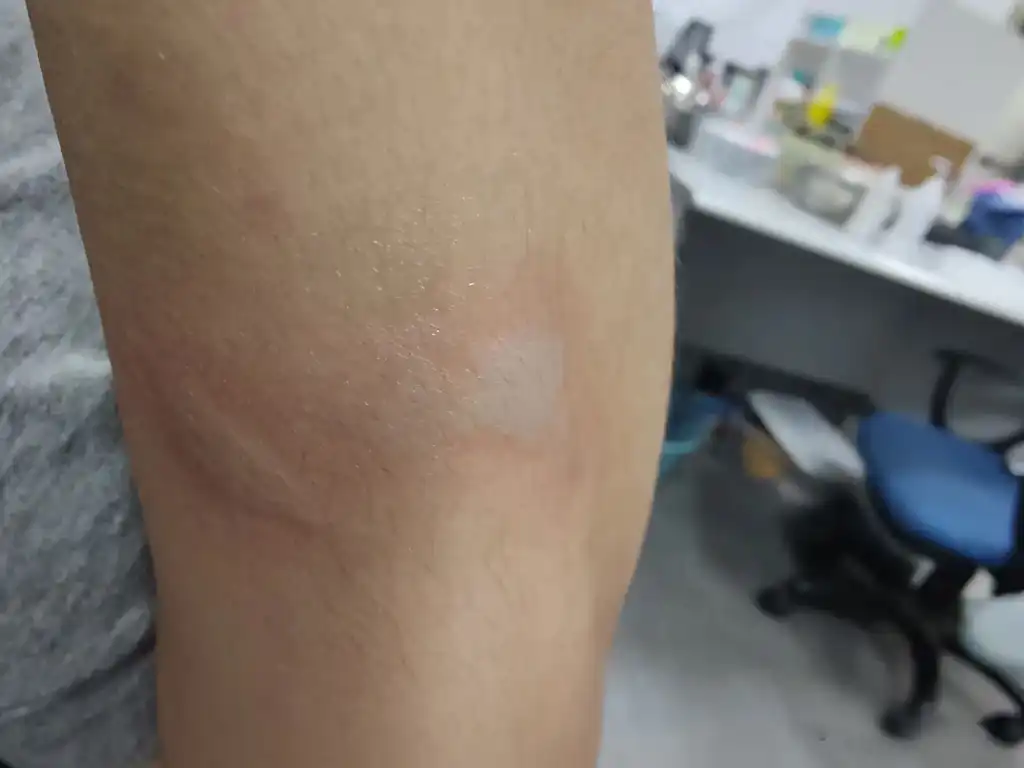
Things to note:
- Individuals with sensitive skin should be cautious around chemicals.
- Using gloves or protective footwear can help prevent contact.
If irritation occurs, it’s important to identify and avoid the chemical causing the problem.
Medical Conditions
Some medical conditions can contribute to the development of blisters. Skin conditions like eczema or psoriasis may weaken the skin, making it more susceptible to blisters.
Examples include:
- Fungal infections like athlete’s foot can cause blistering.
- Certain autoimmune disorders may lead to blister formation.
People with these conditions should take extra care with foot hygiene and seek treatment if blisters occur frequently. Regular check-ups with a healthcare provider can ensure proper management of these conditions.
Location and Identification
Foot blisters can develop in specific areas, making it essential to know where they usually occur and how to identify them. Recognizing the signs and symptoms helps in managing blisters effectively.
Typical Locations on the Foot
Blisters are often found in areas prone to friction and pressure. Common locations include:
- Heels: The back of the heel is a frequent spot for blisters, especially with new shoes.
- Toes: Blisters may form between the toes or on the tops due to tight-fitting footwear.
- Ball of the Foot: This area can develop blisters from excessive walking or running.
- Soles: The bottom of the foot is vulnerable, particularly during vigorous activities.
These locations are where the skin meets the greatest stress from movement or poor shoe fit. Knowing where blisters usually appear helps in early detection.
Identifying Signs and Symptoms
Recognizing the symptoms of foot blisters is crucial for effective treatment. Key signs include:
- Fluid-Filled Bubble: This is the most obvious indicator. Blisters appear as raised bumps filled with clear fluid.
- Redness Around the Area: Often, the skin around the blister may become red or inflamed.
- Pain or Discomfort: Blisters can be tender to touch, and movement may exacerbate the pain.
- Itching or Burning Sensation: Before fully developing, blisters might cause an itch or a burning feeling.
Identifying these signs can help a person take quick action to alleviate discomfort and avoid further injury.
Prevention Strategies
Preventing foot blisters is essential for comfort and mobility. Proper footwear, skin care, and modifications during activities can significantly reduce the risk of developing blisters.
Appropriate Footwear
Choosing the right shoes is critical in preventing blisters. Shoes should fit well without being too tight or too loose. Too much movement can cause friction.
- Material: Look for breathable materials, as they help keep feet dry.
- Socks: Wear moisture-wicking socks that pull sweat away from the skin. Avoid cotton socks that retain moisture.
It is also important to break in new shoes gradually. This allows the feet to adjust without excessive rubbing. Consider using blister prevention products, such as blister pads or tape on areas prone to friction.
Skin Care and Hygiene
Taking care of the skin on the feet plays a vital role in blister prevention. Keeping feet clean and dry is essential.
- Washing: Wash feet daily with soap and water, and dry them thoroughly, especially between the toes.
- Moisturizing: Apply lotion to keep skin soft, but avoid areas prone to friction.
Using a lubricant can further reduce friction during activities. Products like petroleum jelly are effective. It is important to apply it before long walks or runs to help feet slide smoothly against shoes.
Activity Modifications
Adjusting activity levels and techniques can help prevent blisters. Identifying when blisters are more likely to appear can guide modifications.
- Pacing: Take breaks during long events, like hiking or running, to reduce pressure on the feet.
- Terrain: Consider the surface being walked on. Opt for softer surfaces when possible to minimize friction.
Incorporating proper stretching and warm-up routines can also prepare the feet for activity. This enhances flexibility and reduces the chance of blisters forming during extended movements.
Treatment and Management
Foot blisters can be painful, but proper treatment can help manage discomfort and promote healing. This section discusses first aid measures, when to seek medical help, and some effective home remedies for blisters.
First Aid Measures
To treat a blister properly, early intervention is key. Here are steps for effective first aid:
- Clean the Area: Wash hands and the blister with soap and water to prevent infection.
- Protect the Blister: If the blister is intact, cover it with a clean, sterile bandage to shield it from further irritation.
- Drain if Necessary: If the blister is large and painful, it may be drained. Use a sterilized needle to gently puncture the edge. Allow the fluid to escape but keep the skin flap in place to protect the underlying skin.
- Apply Antiseptic: After draining, use an antiseptic to clean the area and apply a fresh bandage.
Being cautious can help prevent complications, especially for those with diabetes or poor circulation.
When to Seek Medical Attention
Some cases require a healthcare professional’s help. Patients should seek medical attention if:
- The blister shows signs of infection. This includes increasing redness, warmth, swelling, or pus.
- The blister is extremely painful or does not heal within a few days.
- Multiple blisters appear or blisters result from a severe burn or allergic reaction.
- The person has a medical condition like diabetes that could complicate healing.
Prompt care can prevent further complications and ensure proper healing.
Home Remedies
Home remedies can offer additional relief and aid in healing. Here are some effective options:
- Warm Compress: Apply a warm, damp cloth to the blister to promote drainage and soothe the area.
- Aloe Vera: The gel from an aloe vera plant can help reduce pain and inflammation. Apply it to the blister for soothing relief.
- Tea Tree Oil: Known for its antibacterial properties, it can be diluted with a carrier oil and applied to reduce the risk of infection.
- Rest: Limiting movement and pressure on the affected area can help the blister heal more quickly.
These remedies can support the healing process and ease discomfort during recovery.
Complications and Risks
Foot blisters can lead to serious complications if not managed properly. Understanding the risks associated with blisters is important, especially for individuals with certain health conditions.
Infection Risks
Infection is a major concern with foot blisters. When a blister forms, it creates a pocket of fluid that can become an entry point for bacteria. If the blister is popped or breaks open, the risk of infection increases significantly.
Signs of infection include:
- Increasing redness around the blister
- Swelling in the area
- Pus or fluid leaking from the blister
- Fever or chills
People with diabetes or weakened immune systems should be especially cautious. An untreated infection can lead to more severe conditions, such as cellulitis or even gangrene, which may require medical intervention or surgery.
Long-Term Skin Damage
Repeated blisters can lead to long-term damage to the skin. When blisters occur frequently, the skin may become thickened or develop calluses. This thickened skin can be painful and may crack, increasing the risk of infection.
Long-term skin damage can also make the skin more sensitive to future friction. Individuals who participate in activities like running or hiking should pay attention to any blisters. Preventative measures, like using better footwear or applying blister pads, can help protect the skin and reduce the risk of further complications.
Long-Term Care and Recovery
Proper care and recovery from foot blisters is essential to ensure they heal correctly and do not come back. The following practices focus on healing, rehabilitation, and monitoring to keep feet healthy.
Proper Healing Practices
To promote proper healing, it is important to keep the blister clean and protected. Gently wash the area with mild soap and water. Avoid popping blisters unless necessary, as this can lead to infections.
If the blister does break, apply an antibiotic ointment and cover it with a clean, sterile bandage to protect it from dirt and friction. Change the bandage daily or whenever it gets wet or dirty.
Wearing loose-fitting shoes allows air circulation, which helps the healing process. Avoid tight footwear that can cause irritation and delay healing.
Rehabilitation Exercises
Gentle exercises can help maintain foot strength and flexibility during recovery. Stretching the feet regularly can prevent stiffness.
Simple exercises include ankle circles, toe stretches, and heel raises. These movements improve blood flow and support healing.
Begin with light stretching and gradually increase intensity as comfort allows. It is crucial to listen to the body and rest if pain occurs during exercises.
Monitoring for Recurrence
After healing, monitoring the feet is vital to prevent future blisters. Watch for early signs of friction or pressure, especially during increased activity.
Choosing the right footwear serves as a first line of defense. Look for shoes that fit well and provide good support.
Using moisture-wicking socks can also help by reducing sweat, which decreases the risk of blisters. If blisters frequently occur, consider consulting a healthcare provider for recommendations on prevention and care.
Frequently Asked Questions
Foot blisters can cause discomfort and concern. Understanding their treatment and causes can help manage and prevent future issues.
How can foot blisters be healed quickly?
To heal foot blisters quickly, it is best to keep the blister clean and covered with a sterile bandage. Elevating the foot and avoiding friction will also speed up healing. Keeping the area dry is important to prevent infection.
What are the best treatments for blisters on the soles of feet?
The best treatments for blisters on the soles of the feet include using padded dressings to reduce pressure. Applying antibiotic ointment can help prevent infection. It is also helpful to wear comfortable, well-fitting shoes to avoid further irritation.
Is popping a blister advisable for healing?
Popping a blister is generally not advisable. It can lead to infection and slow the healing process. If a blister is very large or painful, a healthcare provider can safely drain it while keeping the area sterile.
What could be the underlying causes of unexplained blisters on the feet?
Unexplained blisters on the feet can be caused by several factors, including allergies, infections, or exposure to irritants. Medical conditions such as eczema or diabetes may also contribute. Consulting a healthcare professional can help identify the cause.
What are the different types of foot blisters?
Different types of foot blisters include friction blisters, which form due to rubbing; heat blisters, caused by burns; and blood blisters, which can occur from pinching injuries. Each type may require different care depending on its cause.
Why do water blisters form on the feet?
Water blisters form on the feet mainly due to friction and pressure. They can occur from walking or running, especially in ill-fitting shoes. Sweaty feet can also contribute to the formation of these blisters.

